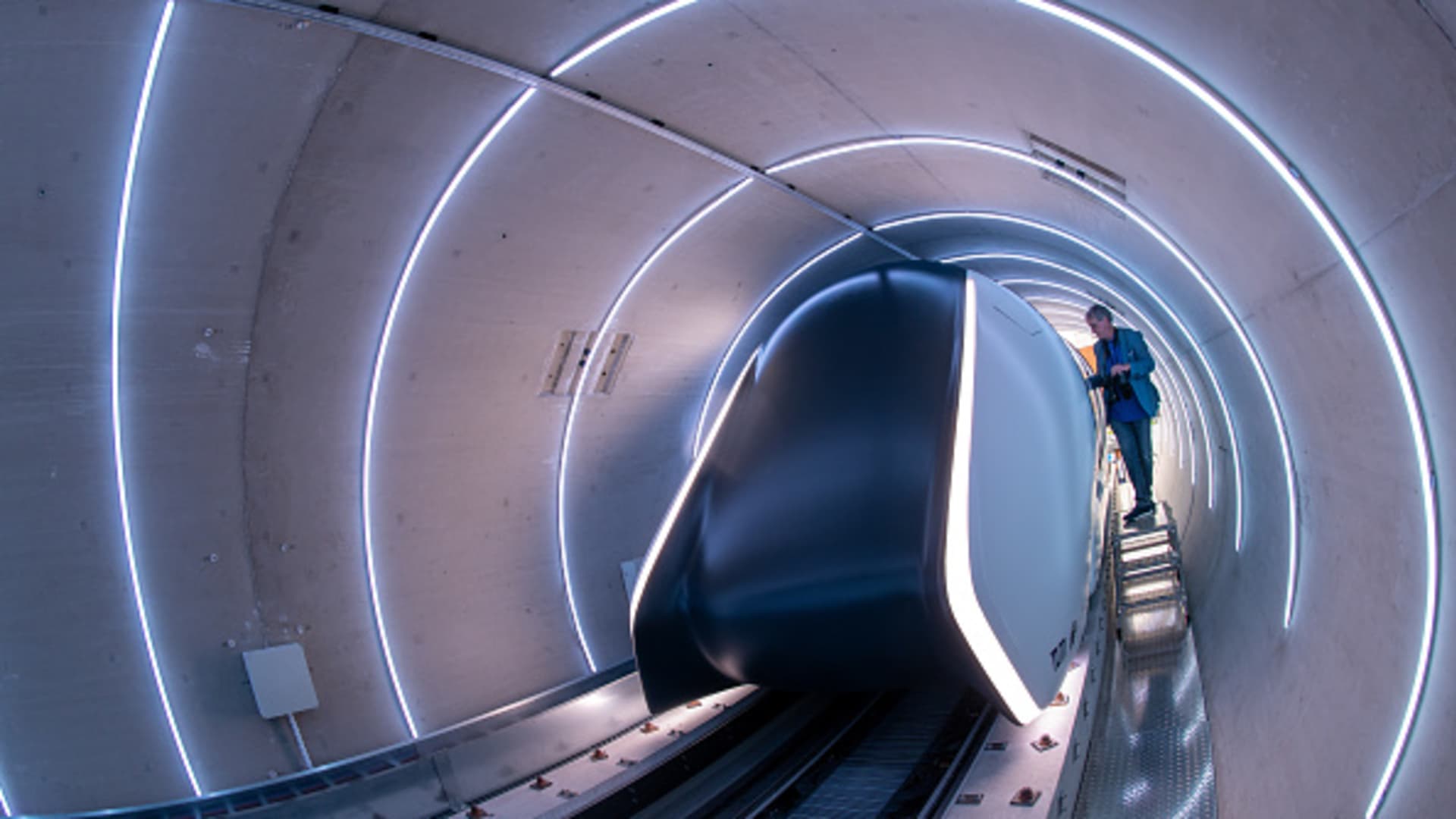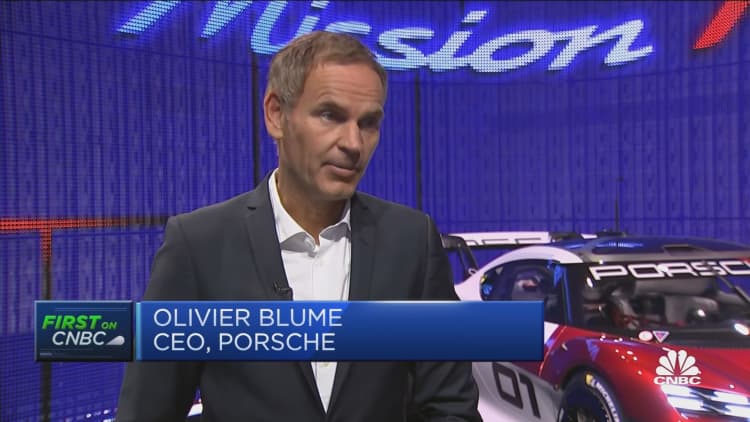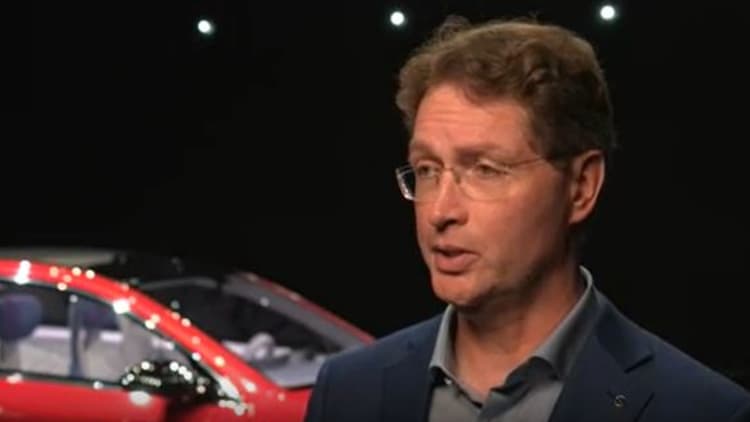
The Hyperloop test track tube with its transport cabin is open for viewing before the opening begins. The new Hyperloop test track at the Technical University of Munich (TUM) includes a 24-meter-long vacuum tube made of concrete and a full-size passenger vehicle – it is the first in Europe to be fully certified for passenger operation, according to TUM.
Peter Kneffel | Picture Alliance | Getty Images
MUNICH — Hyperloop, a mega-fast transportation system dreamed up in 2013 by Tesla and SpaceX founder Elon Musk, was supposed to be a reality by now.
But it hasn’t quite worked out that way.
There has been so much hype, with several firms years ago saying that we would have a mass-scale hyperloop system by now. That just hasn’t happened. Many believe the hyperloop concept will eventually challenge other forms of transportation, including airplanes, by moving people and cargo through tubes at speeds of around to 700 miles per hour.
The dream of a hyperloop hasn’t ended yet.
“I’ve been working on this for seven years now, we wouldn’t be doing it if we don’t believe in it. I mean, I think a lot of the hype, when it came out was really optimistic, like, in two years, in three years, I don’t know. But this is, I mean, this is a timeline that you can use if you build software, maybe, but not if you build infrastructure,” Gabriele Semino, project lead at TUM Hyperloop, told CNBC in an interview.
“Obviously, for this kind of a completely new system, you need to … develop it.”
Since its inception, several companies have been racing to develop their own versions of the hyperloop. TUM Hyperloop is the brainchild of Technical University of Munich. The company is currently building up the technology.
At the IAA auto show in Munich this month, TUM Hyperloop showed off the pod that passengers would sit in. The company has built a tube about 24 meters in length. While this is a short distance, TUM Hyperloop is trying to test the systems work before continuing to build a long track.
Semino said he expects that by the end of this decade the technology will be ready. This would mean short tracks with the hyperloop operating at full speed and transporting passengers. By the end of the next decade, hyperloop technology will have longer tracks built through continents, Semino said.
Hyperloop Transportation Technologies (HTT) and Elon Musk’s Boring Company are also exploring the technology.
Europe a frontrunner for the tech
Hyperloop technology has a chance to solve a lot of problems. It would be a green and super-fast mode of transport. It could also reduce the need to take flights or drive in places like the U.S. or continental Europe.
Semino said it could take the burden off of traditional train lines which could then be used to transport cargo.
“This is not .. wishful thinking. There is right now a necessity for new and better infrastructure,” Semino said.
He said that while regions like the Middle East and China would be candidates for this technology, Europe will likely be among the first regions to get the technology.
“I think right now, for Hyperloop specifically, the region that is making the most progress is Europe,” Semino said.
The European Commission, the European Union’s executive arm, is currently looking into establishing a framework for hyperloop technology.
“From a government framework point of view, Europe is the one that’s most interesting right now” Semino said.







